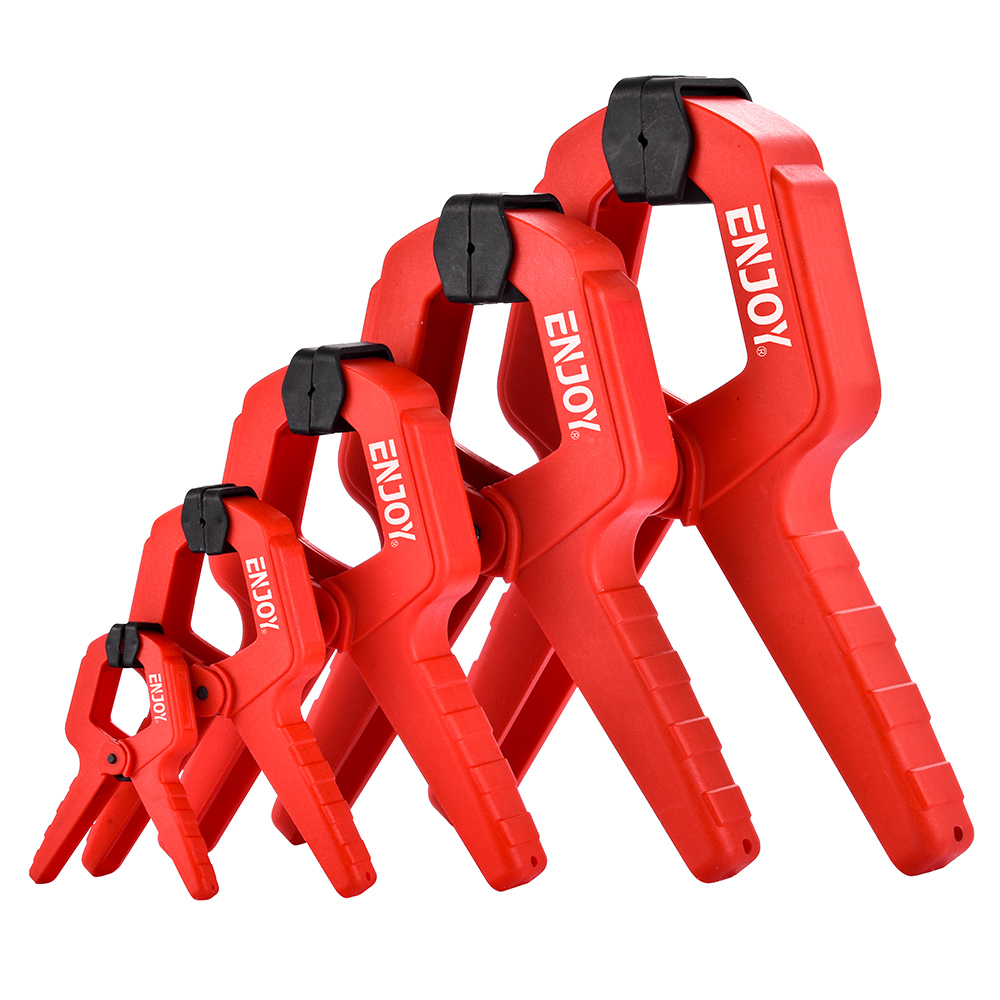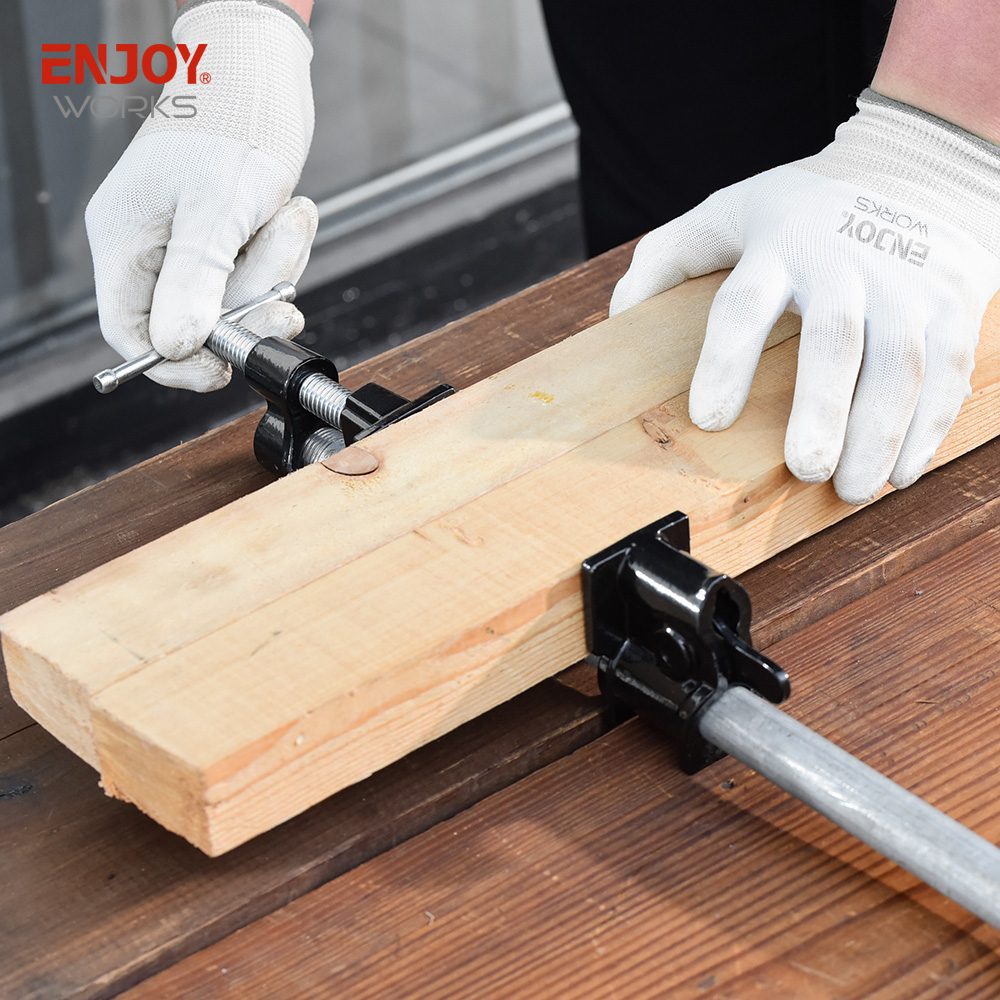Views: 0 Author: Site Editor Publish Time: 2024-10-24 Origin: Site








Woodworking is a precise craft requiring stability and control over materials. Without the proper tools, it’s challenging to keep wood pieces in place while working on them, whether cutting, gluing, or assembling. Clamps, essential tools in woodworking, serve this critical function by holding workpieces securely. They ensure accuracy and safety, enhancing the quality of the final product. This article explores the types and functions of woodworking clamps, offering insights for beginners and experienced woodworkers alike.
Clamping in woodworking is the act of securing pieces of wood in place while performing tasks such as cutting, sanding, gluing, or assembling. This prevents the wood from moving, ensuring that your work is precise and clean. Clamps are vital for projects of all sizes, offering stability and allowing you to work hands-free on delicate or repetitive tasks. In this article, we’ll dive deeper into the types of woodworking clamps, their uses, and how to select the best clamp for your project.

One of the first things to consider when starting a woodworking project is which type of clamp is best suited for the task. There are many types of woodworking clamps, each designed for specific functions. Here, we’ll explore a few of the most commonly used clamps and their benefits.
Bar clamps are among the most versatile and commonly used in woodworking. They consist of a long metal bar, with adjustable jaws on both ends. These clamps are ideal for holding larger workpieces, such as planks of wood, during gluing or assembly. The wide, open structure allows for even pressure across the entire length of the wood, making them perfect for projects like building furniture or assembling large panels.
Bar clamps come in various sizes, with some reaching several feet in length. The longer the bar, the larger the workpiece it can secure. Bar clamps are also easy to adjust, making them an excellent option for projects requiring frequent repositioning.
C-Clamps, named for their C-shaped frame, are used to hold materials together during tasks like cutting or gluing smaller wood pieces. They are compact and versatile, making them suitable for tight spaces or when working on smaller projects like crafting or fixing details. The screw mechanism allows for precise control over the clamping pressure, which is essential when working with delicate materials.
Although C-Clamps are sturdy and reliable, they do not offer as much surface coverage as bar clamps. Therefore, they are best suited for smaller tasks that require precise, strong pressure in one area.
Pipe clamps are another popular choice for woodworking, especially when dealing with large or heavy pieces of wood. They consist of a pipe with adjustable clamping jaws, allowing the user to customize the clamp’s length. This makes pipe clamps particularly useful for large-scale projects like building doors, tables, or other oversized furniture.
What sets pipe clamps apart is their strength and flexibility. Since you can select different lengths of pipes, they provide more adaptability for various projects. The long clamping reach is beneficial for jobs that require a strong, even hold across the workpiece.

Spring clamps are small, hand-operated clamps that work like large clothespins. They are simple, fast, and effective for lightweight clamping tasks, such as temporarily holding small pieces together or securing items while glue dries. Spring clamps are easy to operate, making them a handy tool to have around for quick fixes.
Though they are not suited for heavy-duty tasks, spring clamps are affordable, easy to use, and great for small woodworking jobs. Their simple design and quick-release mechanism make them an essential part of any workshop.
Corner clamps, or miter clamps, are designed for projects that require joining two pieces of wood at a specific angle, typically 90 degrees. These clamps hold the pieces together at the joint, ensuring that the angle remains precise while the adhesive dries or screws are inserted.
These clamps are especially useful for making frames, cabinets, and other items that require perfect right-angle joints. The firm grip they provide ensures clean, sharp corners without slipping.
Choosing the right clamp depends on several factors, including the size of the workpiece, the task at hand, and how much pressure you need. When selecting a clamp, consider the material of your project, the surface area that needs to be clamped, and whether the task requires strong or light pressure.
For large woodworking projects like furniture or cabinets, bar or pipe clamps are ideal because they cover a wide surface area and provide strong clamping pressure. For smaller, more detailed work, C-clamps or spring clamps offer precision and control. It’s always a good idea to have a variety of clamps on hand so you can choose the best one for each stage of your project.
Mastering the use of clamps can take some practice, but there are a few key techniques to keep in mind. First, ensure that your workpieces are aligned properly before clamping them together. Misalignment can result in uneven joints or crooked assemblies, which are difficult to fix once the glue has dried.
Next, apply even pressure across the workpiece. This is particularly important when gluing, as uneven pressure can lead to weak spots in the joint. For large pieces of wood, using multiple clamps spaced evenly across the surface can help distribute the pressure and create a strong, durable bond.
Finally, always check the tightness of your clamps periodically while working. Wood can shift slightly under pressure, so adjusting the clamps as needed will ensure that your project remains secure throughout the process.

If you’re looking for reliable clamping tools, the T-handle Quick Screw Guide Rail Welding Clamp from EnjoyTools is a great addition to any workshop. This heavy-duty clamp features a 28mm insert pin base, designed for stability and ease of use during welding and woodworking projects. With its quick-screw mechanism, it allows for fast adjustments and secure hold, making it ideal for both professionals and hobbyists. The heavy-duty design ensures durability, while the T-handle offers better control, ensuring your work stays precise.
1. What is the main function of clamps in woodworking?
Clamps hold wood pieces in place while performing tasks like cutting, gluing, or assembling to ensure precision.
2. Can I use regular clamps for woodworking?
Yes, many general-purpose clamps can be used for woodworking, but specialized clamps are often better suited for specific tasks.
3. How many clamps should I have in my workshop?
It’s a good idea to have a variety of clamps—bar clamps, C-clamps, and spring clamps—on hand to handle different woodworking projects.
